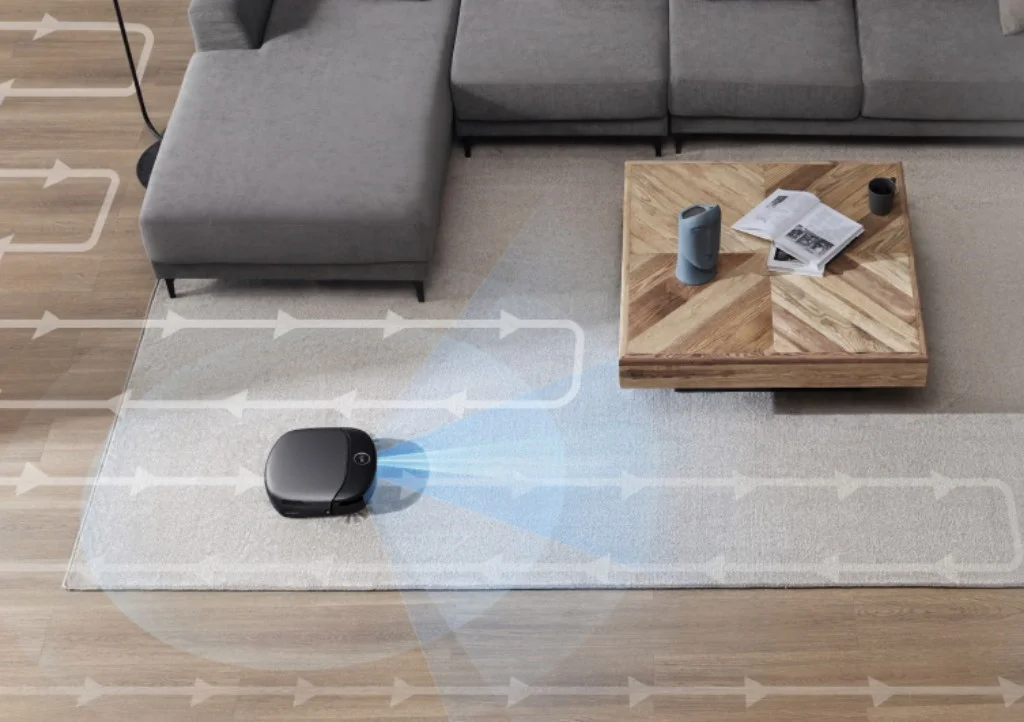Hardwood floors provide beauty and warmth to any house, but they do require regular maintenance. Dust, crumbs, and pet hair are plainly visible on polished wood surfaces, making cleaning a daily effort. A robot vacuum takes on this task with little effort from you. These machines glide across floors, collecting dirt as you focus on other tasks. Choosing the proper model is important since hardwood floors demand cautious handling. The improper vacuum might leave scratches or overlook particles in tight spaces. This article looks at why robot vacuums are a good choice and which characteristics produce the greatest results.
Why Choose a Robot Vacuum for Hardwood Floors?
Protecting Hardwood Surfaces
Robot vacuums help preserve hardwood floors, which may last for decades if properly cared for. Soft bristles or brushless designs are used by the best models to properly capture dirt and avoid damage. Additionally, many devices include rubber or silicone wheels, which lowers the possibility of scuff marks. In contrast to conventional vacuums, which may drag bulky items over the floor, robot vacuums move uniformly and gently. Their suction is modified to collect small particles without producing abrasion. These vacuums’ sophisticated sensors guarantee a delicate touch with surfaces, maintaining hardwood’s smooth, polished appearance throughout time.
Convenience and Time-Saving Benefits
Robot vacuums are very useful in busy families. Rather than pulling out a big upright cleaner, you set the robot to run daily or as required. While you work, rest, or sleep, it discreetly eliminates dirt from all corners. Many models are compatible with applications or voice assistants, allowing you to manage cleaning with a tap or a single command. Families with dogs or children would enjoy this continuous assistance, since crumbs and hair accumulate rapidly. You may save time every week by automating basic cleaning. The device’s capacity to maintain cleanliness on a regular basis lowers the need for extensive cleaning.
Cleaning Efficiency Compared to Upright Vacuums
Despite their diminutive size, robot vacuums produce amazing cleaning results. They capture fine particles that upright vacuums may scatter or miss, thanks to their powerful suction and precision navigation. Their tiny bodies allow them to fit beneath sofas, mattresses, and cupboards, which are sometimes overlooked when using typical cleaning methods. While upright vacuums may do a thorough cleaning, they require time and effort, making them unsuitable for regular usage. Robots undertake modest but regular chores on a steady basis, keeping hardwood floors in good condition over time. They increase indoor air quality and cleanliness by avoiding grit and allergy accumulation, resulting in a better living environment.
What Features Should You Look For?
Suction Power and Brush Design
Suction strength is important when selecting a robot vacuum for hardwood floors. A balance is required—too little suction leaves particles behind, while too much power might waste energy. Brush design is also important. Rubber rollers or soft bristles are ideal for wood since they sweep well without damaging the surface. Some versions use brushless technology, which eliminates tangling with hair and better protects your flooring. Adjustable suction settings provide more versatility, allowing for harsher cleaning in high-traffic areas and softer modes elsewhere. A well-designed mix of suction and brushes captures dust, crumbs, and pet hair efficiently, leaving hardwood immaculate without affecting the finish.

Battery Life and Smart Navigation
The effectiveness of a robot vacuum is determined by its operating time and its ability to move intelligently. Long battery life allows the gadget to cover broad regions without requiring regular recharge. Look for versions that last at least 90 minutes per charge and include automated docking for recharging. Smart navigation improves performance by mapping your house and using logical pathways instead of random ones. Advanced systems utilize laser or camera technologies to prevent missing areas and overlapping tracks. With effective mapping, the robot covers floors swiftly and evenly, conserving energy and prolonging battery life. Together, powerful power and intelligent navigation provide thorough, dependable hardwood cleaning.
Sensors to Prevent Scratches and Damage
Protecting hardwood takes more than just careful brushing; it also involves accurate sensing. Modern robot vacuums utilize drop sensors to prevent stair falls and bump sensors to avoid colliding with furniture. For hardwood, edge detection and obstacle sensors are very critical. They allow the vacuum to go easily around table legs, carpets, and walls without scratching the surfaces. Some sophisticated versions may even detect changes in floor type and adjust suction accordingly. These robots eliminate scratches and dents by combining real-time detection and mild manipulation. Reliable sensors provide homeowners with the peace of mind that their floors will stay safe while being cleaned consistently and effectively.
Conclusion
The finest robotic vacuum for hardwood floors strikes a balance between cleaning power and delicate handling. These gadgets preserve fragile wood surfaces, save time, and give better coverage than human approaches. When buying, consider suction design, smart navigation, and protective sensors to assure performance and safety. Daily cleaning with a robot vacuum keeps your house clean without requiring additional work. For even better results, pair your device with proper care techniques, such as learning how to clean hardwood floors. By choosing a model tailored for hardwood, you extend floor life and enjoy cleaner, healthier living spaces.



